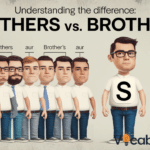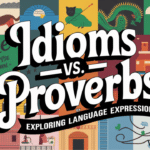In the realm of human expression and creation, the terms artist and artisan often spark interesting debates about their distinctions. Understanding what separates these two creative forces helps us appreciate their unique contributions to society and culture.
Historical Foundations
The historical origins of the terms artist and artisan trace back to medieval times. While both emerged from the Latin word “ars,” meaning skill or craft, their paths diverged significantly during the Renaissance period.
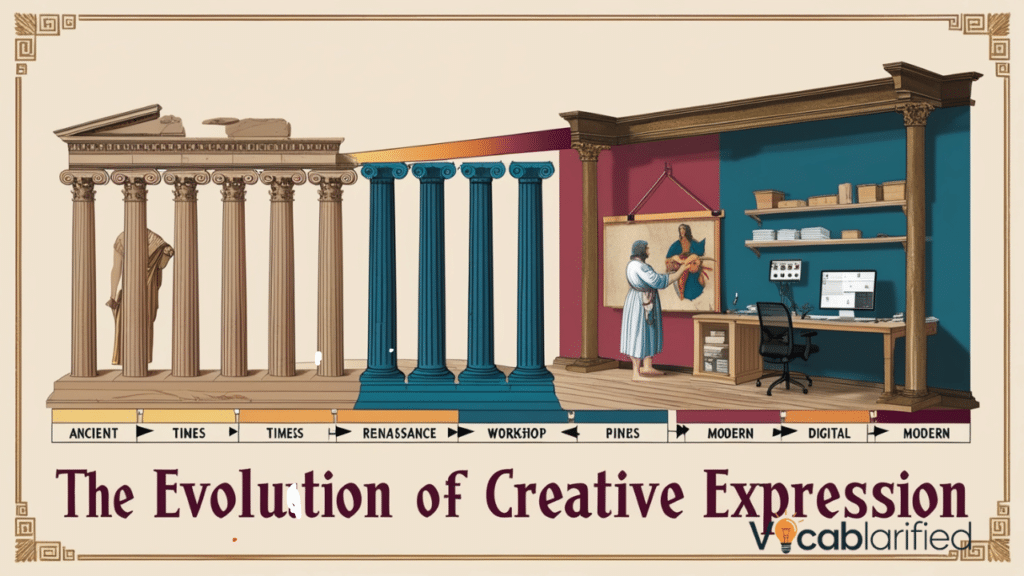
Here’s a comprehensive look at how these terms evolved across different cultures:
| Era | Artist Definition | Artisan Definition | Cultural Context |
|---|---|---|---|
| Ancient Greece | Creator of beauty | Skilled craftsperson | Beauty vs utility |
| Middle Ages | Guild member | Manual worker | Social hierarchy |
| Renaissance | Independent creator | Workshop worker | Patronage system |
| Industrial Age | Free spirit | Factory worker | Mass production |
| Victorian Era | Bohemian figure | Trade specialist | Class distinction |
| Modern Era | Creative professional | Skilled maker | Digital revolution |
| Digital Age | Multi-medium creator | Traditional crafts | Online platforms |
| Contemporary | Experience designer | Artisanal producer | Social media |
| Future Trends | Virtual artist | Digital craftsperson | AI integration |
| Post-modern | Hybrid creator | Tech-savvy maker | Cross-disciplinary |
Creative Expression vs Practical Purpose
The fundamental difference between an artist and an artisan lies in their primary motivations. What is the difference between an artist and an artisan? At its core, it’s about the balance between expression and function.
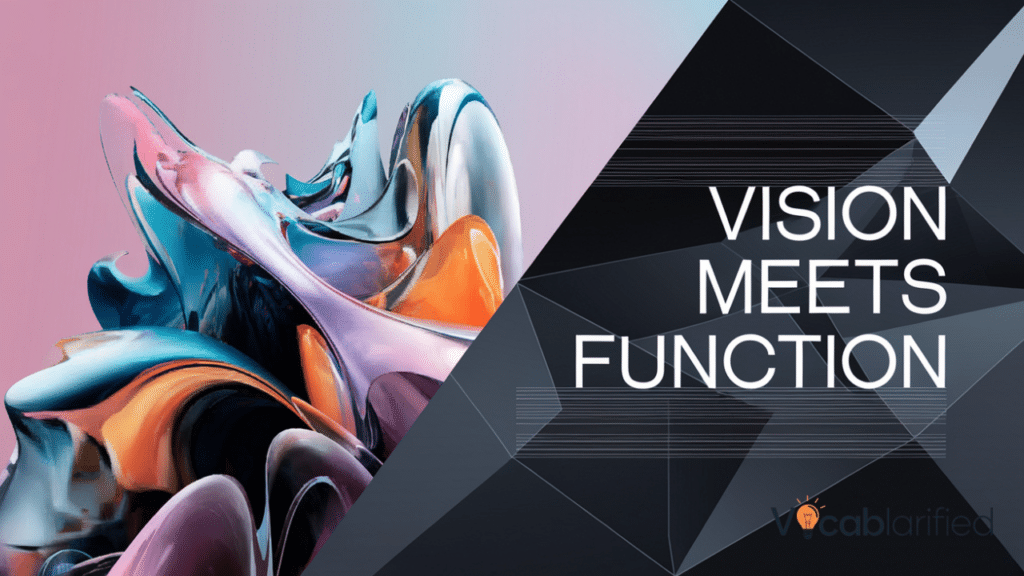
Consider this email from gallery owner Sarah Chen to her colleague:
“Dear Marcus, The new exhibition perfectly highlights the distinction between artistic versus functional creation. While James’s abstract sculptures serve pure aesthetic purposes, Maria’s handcrafted furniture pieces blend beauty with functionality. Both showcase extraordinary talent, but their approaches couldn’t be more different.”
Here’s how different industries view these roles:
| Industry | Artist Role | Artisan Role | Primary Output |
|---|---|---|---|
| Fashion | Designer | Tailor | Style vs Fit |
| Food | Chef-Artist | Baker | Innovation vs Tradition |
| Technology | UX Designer | Developer | Vision vs Function |
| Architecture | Conceptual | Technical | Form vs Structure |
| Publishing | Author | Printer | Story vs Production |
| Music | Composer | Instrument Maker | Melody vs Tool |
| Film | Director | Editor | Vision vs Execution |
| Gaming | Game Designer | Programmer | Experience vs Mechanics |
| Furniture | Designer | Woodworker | Style vs Durability |
| Jewelry | Designer | Metalsmith | Beauty vs Craft |
Mastering Different Domains
Skill and Vision
The journey to mastery differs significantly between these paths. While both require dedication, skill mastery takes different forms. Artists often focus on developing their unique vision and creative expression, while artisans perfect their traditional methods and techniques and materials.
Here’s how skills develop across different mediums:
| Medium | Artist Skills | Artisan Skills | Time Investment |
|---|---|---|---|
| Painting | Color theory | Canvas preparation | 5-10 years |
| Sculpture | Form design | Material handling | 7-12 years |
| Digital Art | Concept development | Software mastery | 3-8 years |
| Photography | Composition | Equipment mastery | 4-9 years |
| Animation | Storytelling | Technical execution | 6-11 years |
| Ceramics | Design innovation | Throwing technique | 5-10 years |
| Textiles | Pattern creation | Weaving mastery | 4-9 years |
| Metalwork | Artistic vision | Forging technique | 7-12 years |
| Glass | Color expression | Blowing technique | 8-13 years |
| Wood | Design aesthetic | Joint mastery | 6-11 years |
Professional Paths
The characteristics of artists and artisans shape their career trajectories. Consider this professional recommendation letter:
“To Whom It May Concern, Having worked with both Sarah (artist) and Michael (artisan) at Creative Solutions Inc., I’ve observed how their different approaches complement each other. Sarah’s abstract thinking and creativity drive innovation, while Michael’s craftsmanship ensures practical implementation.”
Modern Interpretations
Digital Age Evolution
In today’s digital landscape, the lines between artist and artisan increasingly blur. Art forms evolve as technology advances, while traditional functionality finds new expression in digital spaces.
Consider these evolving roles:
| Digital Role | Artistic Element | Artisanal Element | Market Value |
|---|---|---|---|
| Web Designer | Visual appeal | User experience | High demand |
| Game Artist | World building | Mechanics | Growing |
| 3D Modeler | Creativity | Technical precision | Expanding |
| UI Designer | Aesthetics | Usability | Essential |
| Sound Designer | Composition | Engineering | Specialized |
| Motion Artist | Animation | Technical execution | Premium |
| VR Creator | Immersion | Functionality | Emerging |
| AR Developer | Visual design | Implementation | Innovative |
| Digital Sculptor | Artistic vision | Technical skill | Niche |
| NFT Creator | Unique concept | Blockchain craft | Volatile |
Cultural Impact
The impact of both artists and artisans extends beyond their immediate work. Examples of artists and artisans throughout history show how they shape cultural narratives and practical innovations.
Contemporary Relevance
Today’s creators often blend emotional engagement with practical application. While artists continue to push boundaries of unique vision, artisans evolve their craft to meet modern demands while maintaining cultural significance.
Their distinct approaches to creation continue to enrich our world, whether through purely aesthetic experiences or beautifully crafted functional objects. The synergy between art and craft distinctions drives innovation across industries, making both artists and artisans essential to human progress and cultural evolution.
Professional Development
Learning Pathways
The journey to becoming either an artist or artisan involves distinct educational approaches.
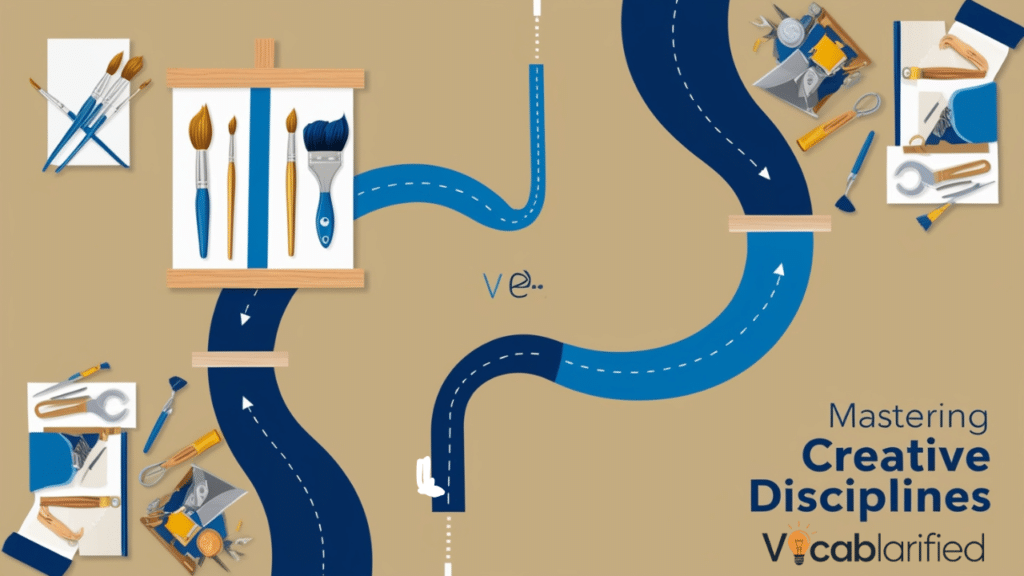
While formal education plays a role in both paths, the emphasis differs significantly in terms of skill mastery and creative development.
| Educational Path | Artist Focus | Artisan Focus | Duration |
|---|---|---|---|
| University | Theory & Concepts | Technical Skills | 4-6 years |
| Apprenticeship | Studio Practice | Hands-on Training | 3-5 years |
| Self-Directed | Personal Style | Technique Mastery | Ongoing |
| Workshops | Experimentation | Specific Skills | Variable |
| Online Courses | Creative Vision | Process Learning | 6-18 months |
| Mentorship | Artistic Voice | Trade Secrets | 2-4 years |
| Residency | Portfolio Building | Production Methods | 6-12 months |
| Certification | Art History | Safety Standards | 1-2 years |
| Field Study | Inspiration | Traditional Methods | Variable |
| Professional Dev | Network Building | Business Skills | Ongoing |
Market Integration
Consider this business proposal excerpt from Emma Thompson, a gallery curator:
“Our upcoming exhibition ‘Convergence’ will showcase how modern creators blend artistic versus functional creation. We’ll feature Rachel’s digital installations alongside Marcus’s handcrafted furniture, demonstrating how creativity and craftsmanship can coexist in contemporary spaces.”
Technological Impact
Digital Transformation
The digital revolution has transformed both art forms and traditional craft practices. Modern creators often blend traditional methods with innovative technologies.
| Technology | Artist Application | Artisan Application | Impact Level |
|---|---|---|---|
| 3D Printing | Sculpture Creation | Prototype Making | Revolutionary |
| AR/VR | Virtual Galleries | Training Tools | Transformative |
| AI Tools | Style Generation | Pattern Design | Significant |
| CNC Machines | Installation Art | Precise Cutting | Fundamental |
| Digital Tablets | Concept Art | Technical Drawing | Essential |
| Motion Capture | Performance Art | Process Analysis | Moderate |
| Laser Cutting | Art Installation | Detail Work | High |
| Cloud Storage | Portfolio Display | Pattern Library | Supportive |
| Social Media | Art Marketing | Craft Showcase | Critical |
| E-commerce | Direct Sales | Custom Orders | Vital |
Collaborative Spaces
Modern workspaces increasingly foster collaboration between artists and artisans. Their combined approach to creative expression and skilled craftsmanship leads to innovative solutions.
Economic Perspectives
Market Dynamics
The economic value of both artistic and artisanal work continues to evolve. Consider this market analysis email:
“Dear Investors, The rising demand for authentic experiences has created unique opportunities in both fine art and artisanal markets. While pure artistic expression commands premium prices in galleries, high-quality practical objects are seeing unprecedented demand in luxury retail.”
| Market Segment | Artist Revenue | Artisan Revenue | Growth Trend |
|---|---|---|---|
| Private Sales | Commission Based | Product Based | Steady |
| Gallery Shows | High Margins | Limited Reach | Volatile |
| Online Sales | Digital Rights | Direct Sales | Growing |
| Corporate Work | Project Based | Contract Based | Stable |
| Teaching | Workshop Fees | Training Programs | Increasing |
| Licensing | Royalties | Production Fees | Emerging |
| Consulting | Creative Direction | Technical Advice | Expanding |
| Publications | Book Deals | Instructional | Moderate |
| Merchandise | Brand Value | Craft Products | Dynamic |
| Collaboration | Cross-Industry | B2B Services | Rising |
Future Trajectories
Evolving Roles
The distinction between artist and artisan continues to evolve as technology and society advance. Modern creators often embody aspects of both roles, combining unique vision with technical excellence.
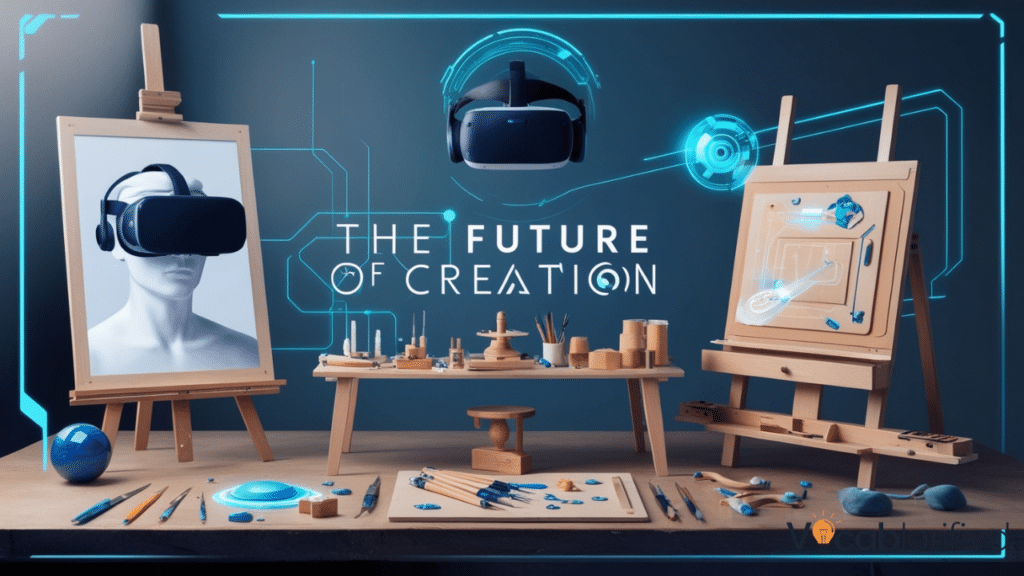
The future promises even more interesting developments in how we understand and value these roles. Emotional engagement remains central to artistic work, while functionality drives artisanal creation, yet these boundaries become increasingly fluid.
Sustainability Focus
Both artists and artisans are increasingly incorporating sustainable practices into their work. This shift reflects growing awareness of environmental impact and cultural responsibility.
From an artist’s exhibition statement by Alexandra Chen:
“My installation explores the intersection of creative expression and environmental consciousness. Each piece demonstrates how artistic vision can promote sustainable thinking while honoring traditional methods of creation.”
This evolution in both fields suggests a future where the distinction between artist and artisan may become less about their differences and more about how their complementary strengths can address contemporary challenges. Their shared commitment to excellence, whether through pure creativity or refined craftsmanship, continues to enrich our cultural landscape and practical world alike.
The ongoing dialogue between artistic versus functional creation remains vital to human progress, suggesting that both artists and artisans will play crucial roles in shaping our future visual and material culture.
Innovation Landscapes
Emerging Platforms
The digital age has created new opportunities for both artists and artisans to showcase their creativity and craftsmanship. Social media platforms and online marketplaces have transformed how creators connect with their audiences.
| Platform Type | Artist Usage | Artisan Usage | Engagement Rate |
|---|---|---|---|
| Portfolio Display | Process Sharing | 4.7% Average | |
| YouTube | Performance Art | Tutorial Content | 3.2% Average |
| TikTok | Quick Creation | Craft Tips | 8.1% Average |
| Inspiration Board | DIY Guides | 2.9% Average | |
| Professional Network | B2B Connection | 2.1% Average | |
| Community Building | Market Access | 1.8% Average | |
| Art Discussion | Trade Tips | 2.4% Average | |
| Etsy | Limited Editions | Main Storefront | 5.3% Average |
| Behance | Project Showcase | Technical Display | 3.7% Average |
| Patreon | Behind Scenes | Skill Teaching | 6.2% Average |
Cross-Disciplinary Approaches
Consider this collaboration proposal from Digital Arts Director James Wong:
“Our next project merges the boundaries between art forms and functional design. We’re seeking both artists who excel in creative expression and artisans skilled in traditional methods to create an interactive installation that challenges the conventional divide between art and craft.”
Material Mastery
Resource Utilization
The way artists and artisans approach materials reflects fundamental differences in their creative processes. Here’s an analysis of material approaches across different mediums:
| Material Type | Artist Approach | Artisan Approach | Sustainability Factor |
|---|---|---|---|
| Wood | Sculptural Freedom | Structural Integrity | High Renewable |
| Metal | Expressive Form | Functional Strength | Medium Recyclable |
| Glass | Color Expression | Practical Formation | High Recyclable |
| Textile | Artistic Pattern | Durable Construction | Variable Sustainable |
| Clay | Abstract Form | Functional Design | High Renewable |
| Stone | Artistic Vision | Practical Durability | Low Renewable |
| Plastic | Contemporary Art | Precise Molding | Low Recyclable |
| Paper | Creative Freedom | Technical Precision | High Renewable |
| Digital | Unlimited Expression | Efficient Design | Energy Dependent |
| Mixed Media | Experimental | Purposeful Blend | Context Dependent |
Technical Evolution
From a workshop invitation by Master Craftsman Thomas Chen:
“Join us for an intensive exploration of how skill mastery meets modern innovation. We’ll examine how traditional craft techniques adapt to contemporary demands while maintaining the essence of skilled craftsmanship.”
Cultural Integration
Social Impact
The influence of artists and artisans extends beyond their immediate creations, shaping cultural narratives and practical innovations. Their work reflects and influences societal values:
| Cultural Aspect | Artist Impact | Artisan Impact | Social Value |
|---|---|---|---|
| Heritage | Interpretation | Preservation | High Cultural |
| Innovation | Conceptual Push | Practical Progress | High Economic |
| Education | Creative Thinking | Skill Transfer | Core Social |
| Community | Cultural Voice | Local Economy | Strong Communal |
| Sustainability | Awareness Raising | Practical Solutions | Critical Future |
| Technology | Digital Art | Smart Crafting | High Innovation |
| Wellness | Emotional Health | Functional Support | Growing Impact |
| Economy | Value Creation | Job Creation | Essential Growth |
| Identity | Cultural Expression | Traditional Skills | Deep Heritage |
| Future Vision | New Perspectives | Sustainable Methods | Forward Looking |
Global Exchange
The digital age facilitates unprecedented cultural exchange. Consider this festival announcement:
“Our International Creator’s Festival celebrates the fusion of unique vision and practical objects. From digital artists pushing boundaries of emotional engagement to master artisans preserving traditional methods, we showcase how creativity and functionality unite in our global creative community.”
This ongoing dialogue between artistic and artisanal approaches enriches our understanding of human creativity and innovation. As we move forward, the distinction between artist and artisan may matter less than their shared commitment to excellence and meaningful creation.
The future promises even more exciting developments as technology, sustainability concerns, and cultural exchange create new opportunities for both artistic and artisanal expression. Whether through pure creativity or refined craftsmanship, these creators continue to shape our world in profound and lasting ways.
Understanding what is the difference between an artist and an artisan helps us appreciate their unique contributions while recognizing their complementary roles in cultural and economic development. Together, they form a powerful creative force that drives human progress and cultural evolution.
Business Dynamics
Market Evolution
The business landscape for both artists and artisans continues to evolve with changing consumer preferences and technological capabilities. Their approaches to creativity and craftsmanship shape different business models.
| Business Model | Artist Strategy | Artisan Strategy | Revenue Potential |
|---|---|---|---|
| Direct Sales | Limited Editions | Custom Orders | High Variable |
| Wholesale | Art Prints | Product Lines | Steady Medium |
| Licensing | Image Rights | Design Patents | Passive High |
| Education | Art Classes | Trade Training | Consistent Medium |
| Consultation | Creative Direction | Technical Advice | Premium High |
| Collaboration | Brand Partnerships | Production Contracts | Project Based |
| Digital Content | Online Galleries | Tutorial Series | Growing Medium |
| Events | Exhibitions | Trade Shows | Seasonal High |
| Subscriptions | Studio Access | Craft Boxes | Monthly Recurring |
| Publications | Art Books | Technical Guides | Long Term Low |
Professional Communication
From a creative agency brief by Creative Director Sarah Martinez:
“Our client seeks to blend artistic versus functional creation in their new product line. We need both artists who can push boundaries with creative expression and artisans who excel in traditional methods to achieve this vision.”
Educational Frameworks
Knowledge Transfer
The transmission of skills and knowledge differs significantly between artistic and artisanal traditions. Here’s how learning approaches vary:
| Learning Aspect | Artist Development | Artisan Training | Time Investment |
|---|---|---|---|
| Foundation Skills | Creative Theory | Basic Techniques | 1-2 Years |
| Core Knowledge | Art History | Material Science | 2-3 Years |
| Technical Skills | Medium Mastery | Tool Expertise | 3-5 Years |
| Advanced Methods | Style Development | Process Mastery | 5-7 Years |
| Business Acumen | Gallery Relations | Market Analysis | Ongoing |
| Digital Skills | Online Presence | CAD Design | 1-2 Years |
| Teaching Skills | Creative Guidance | Technical Training | 2-4 Years |
| Research Methods | Concept Development | Process Innovation | Continuous |
| Network Building | Art Community | Trade Association | Career Long |
| Professional Dev | Critical Theory | Safety Standards | Regular Update |
Institutional Perspective
Consider this curriculum development memo from Art Institute Dean Jennifer Wong:
“Our new interdisciplinary program bridges the gap between art forms and practical craft. Students will explore both emotional engagement through artistic practice and functionality through skilled craftsmanship.”
Contemporary Challenges
Adaptation Strategies
Both artists and artisans face unique challenges in today’s rapidly changing world. Their responses demonstrate different approaches to innovation:
| Challenge | Artist Solution | Artisan Solution | Success Rate |
|---|---|---|---|
| Digital Shift | Virtual Galleries | Online Workshops | High Impact |
| Market Access | Social Platform | E-commerce Sites | Medium Growth |
| Sustainability | Eco-Art | Green Production | Growing Focus |
| Competition | Unique Style | Quality Focus | Variable Success |
| Cost Pressure | Limited Editions | Efficient Process | Challenging |
| Authentication | Digital Certificates | Maker’s Marks | High Trust |
| Global Reach | Online Presence | Export Markets | Expanding |
| Innovation | New Mediums | Smart Materials | Mixed Results |
| Education | Remote Teaching | Video Training | Adaptable |
| Community | Virtual Events | Trade Networks | Building Phase |
Professional Standards
From a craft guild announcement by Master Artisan Michael Chen:
“Excellence in skill mastery remains our foundation, whether expressing unique vision through art or creating practical objects through craft. Our standards evolve while honoring traditional methods.”
These various aspects of professional practice demonstrate how artists and artisans continue to adapt while maintaining their distinct approaches to creation. Understanding what is the difference between an artist and an artisan becomes increasingly important as these roles evolve and intersect in new ways.
The future success of both artists and artisans will depend on their ability to balance tradition with innovation, maintaining the essence of their practice while embracing new opportunities. Their combined influence on culture and commerce continues to shape our understanding of creativity, craft, and human potential.
As we look ahead, the synergy between artistic innovation and artisanal excellence promises to generate new forms of creative expression and practical solution. This ongoing dialogue enriches our cultural landscape while addressing the practical needs of society through both creative expression and skilled craftsmanship.
Future Perspectives
Convergence Trends
The relationship between artists and artisans continues to evolve, with increasing overlap between creative expression and skilled craftsmanship. These trends shape future opportunities:
| Trend Area | Artist Evolution | Artisan Evolution | Future Impact |
|---|---|---|---|
| Technology | Digital Creation | Smart Production | Transformative |
| Sustainability | Eco-Art Movement | Green Crafting | Revolutionary |
| Education | Hybrid Learning | Virtual Training | Fundamental |
| Commerce | NFT Markets | Direct Platform | Disruptive |
| Innovation | AI Integration | Automation Tools | Significant |
| Collaboration | Cross-Medium | Inter-Trade | Expansive |
| Social Impact | Cultural Voice | Community Build | Substantial |
| Preservation | Digital Archive | Skill Recording | Essential |
| Global Reach | Virtual Shows | World Markets | Extensive |
| Authenticity | Blockchain Verify | Digital Signature | Critical |
Integration Models
From a design symposium keynote by renowned creator Alexandra Davis:
“The future belongs to those who understand that creativity and functionality are not opposing forces but complementary strengths. The distinction between art forms and craft will become less about separation and more about synergy.”
Concluding Insights
Bridging Traditions
The journey of understanding what is the difference between an artist and an artisan reveals that these roles, while distinct, are increasingly interconnected. Their shared commitment to excellence manifests differently:
| Aspect | Artist Contribution | Artisan Contribution | Combined Value |
|---|---|---|---|
| Vision | Innovative Ideas | Practical Solutions | Complete Design |
| Process | Creative Freedom | Structured Method | Balanced Approach |
| Output | Unique Pieces | Refined Products | Market Range |
| Impact | Cultural Shift | Daily Utility | Societal Growth |
| Legacy | Artistic Movement | Craft Tradition | Cultural Heritage |
| Learning | Self Expression | Skill Transfer | Knowledge Base |
| Progress | New Concepts | Better Methods | Innovation |
| Community | Art Culture | Trade Network | Rich Ecosystem |
| Economy | Value Creation | Market Stability | Economic Health |
| Future | Vision Setting | Foundation Build | Sustainable Path |
Unified Progress
Looking forward, the distinction between artist and artisan becomes less about division and more about specialization within a broader creative spectrum. Their complementary approaches to creation enrich our world through both emotional engagement and practical application.
Consider this excerpt from an industry forecast report:
“Tomorrow’s creative landscape will reward those who can bridge the gap between unique vision and traditional methods. The most successful creators will be those who understand both the poetry of art and the precision of craft.”
Final Reflections
The relationship between artists and artisans represents one of humanity’s most enduring creative dialogues. Their distinct yet complementary approaches to creation continue to evolve, shaped by technology, cultural changes, and shifting market demands.
Understanding these roles helps us appreciate the full spectrum of human creativity. Artists push boundaries through creative expression, while artisans perfect functionality through dedicated craftsmanship. Together, they form a complete picture of human creative potential.
The future promises even more exciting developments as technology breaks down traditional barriers between artistic versus functional creation. This evolution suggests not the end of distinction between artists and artisans, but rather a richer understanding of how their unique strengths contribute to human progress.
As we move forward, the most successful creators will likely be those who can appreciate and draw from both traditions. Whether through pure artistic vision or refined craft, the goal remains the same: to enrich human experience through meaningful creation.
In conclusion, while artists and artisans may take different paths, their journeys lead to the same destination: the enhancement of human experience through creative endeavor. Their combined contributions ensure that both beauty and function continue to evolve, making our world richer in both meaning and utility.

Emma Carter is an experienced blogger at Vocablarified. She enjoys helping people expand their vocabulary and improve their language skills. With a warm and approachable writing style, Emma makes learning new words fun and accessible. When she’s not writing, she loves reading books and discovering new phrases to share with her readers. Emma is passionate about making language learning an enjoyable journey for everyone.




